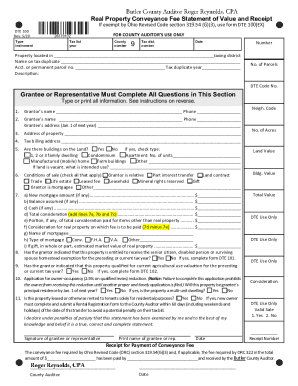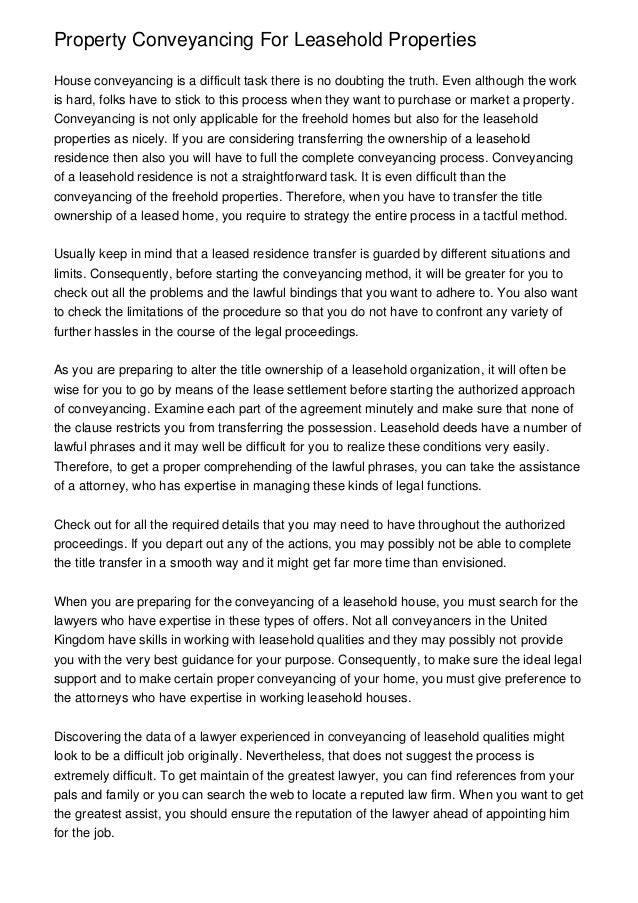
As land is a type of real estate with attached rights, exploration companies utilize the term conveyance to refer to contracts that transfer to the company rights to or ownership of specific parcels of land. Mineral Rights ConveyanceĬonveyance applies to the oil and gas industry as well. The documents provided for conveyancing usually include the mortgage documents, the title insurance binder, certificate of liens, the deed, and any side agreements associated with the sale. The process involved in a typical conveyance would include a review for liens, as well as, other encumbrances, ensuring every condition has been met, settling all charges and taxes with the right party before the transfer, confirming financing, as well as, preparing every necessary document for final settlement. Conveyance is the category and sales deed is a conveyance type which falls within this category. The conveyance in the majority of real estate transactions is also referred to as the sale deed. Real Estate ConveyanceĬonveyance as a terminology generally applies legally beyond residential real estate. The majority of buyers buy title insurance to safeguard against the likelihood of fraud during the process of title transfer. Conveyancing makes sure that the buyer is informed beforehand of any restraint on the property, like liens and mortgages, and guarantees the buyer clean title to the property. Supposing either party doesn't do so, the other party is capable of suing the defaulting party to court to either claim damages or enforce the contract. How Does a Conveyance Work?Ī conveyance refers to a contract, meaning that the buyer, as well as, the seller is legally bound to fulfill their obligations. Conveyance of ownership of real estate is also known as conveyancing, and the legal representative supervising the process is called a conveyancer. The term is often associated with real estate, where a conveyance is the written contract existing between the buyer and the seller stating the purchase price agreed on and also the actual transfer date, and also both parties obligations and responsibilities.

Conveyance also means the written instrument, like a lease or deed which transfers a property's legal title from the seller to the buyer. Jones, husband and wife, as tenants by the entirety, and not as tenants in common….Back To: Real Estate, Personal, & Intellectual Property What is a Conveyance?Ĭonveyance involves the transfer of ownership interest in the property from a party to another one. Sample language: “…to Grantees, Alice K.This is also called “community property.” Each spouse owns the whole property and neither can transfer their right in the property without the consent of the other spouse. Jones, as joint owners with rights of survivorship, and not as tenants in common.…” X Research source When one dies, the other grantee gets the share automatically. Jones, as tenants in common, the following described real estate, together with rents, profits, fixtures, and other appurtenant interests, in Dane County, State of Wisconsin (‘Property’):” Language to create a tenancy in common would read: “Grantor, for a valuable consideration, conveys to Grantees, Alice K.Also, when one owner dies, their share can be left to whoever they want. Either person can sell their share when they want. For example, you might transfer property to two siblings, one of whom will take 70% ownership and the other will take 30% ownership. People can hold a property in the following ways: X Research source If you are transferring the property to more than one person, then you have to specify how the grantees will hold the property. X Research source Grant deeds are not available in all states. With a grant deed, the seller promises that the title hasn’t been transferred to someone else.

X Research source Because quitclaim deeds provide less protection, they are usually used to transfer property between family members or between close friends.

However, the seller does not promise that it actually owns the title to the property. With a quitclaim deed, the seller transfers whatever interest in the property that they own. You should use it if you don’t know the seller. A warranty deed provides the buyer with the most protection. X Research source If the seller does not actually hold title, then the buyer can sue for compensation. With this deed, the seller guarantees that he or she owns the property being transferred. But they differ in the amount of protection that they give the buyer.


 0 kommentar(er)
0 kommentar(er)
